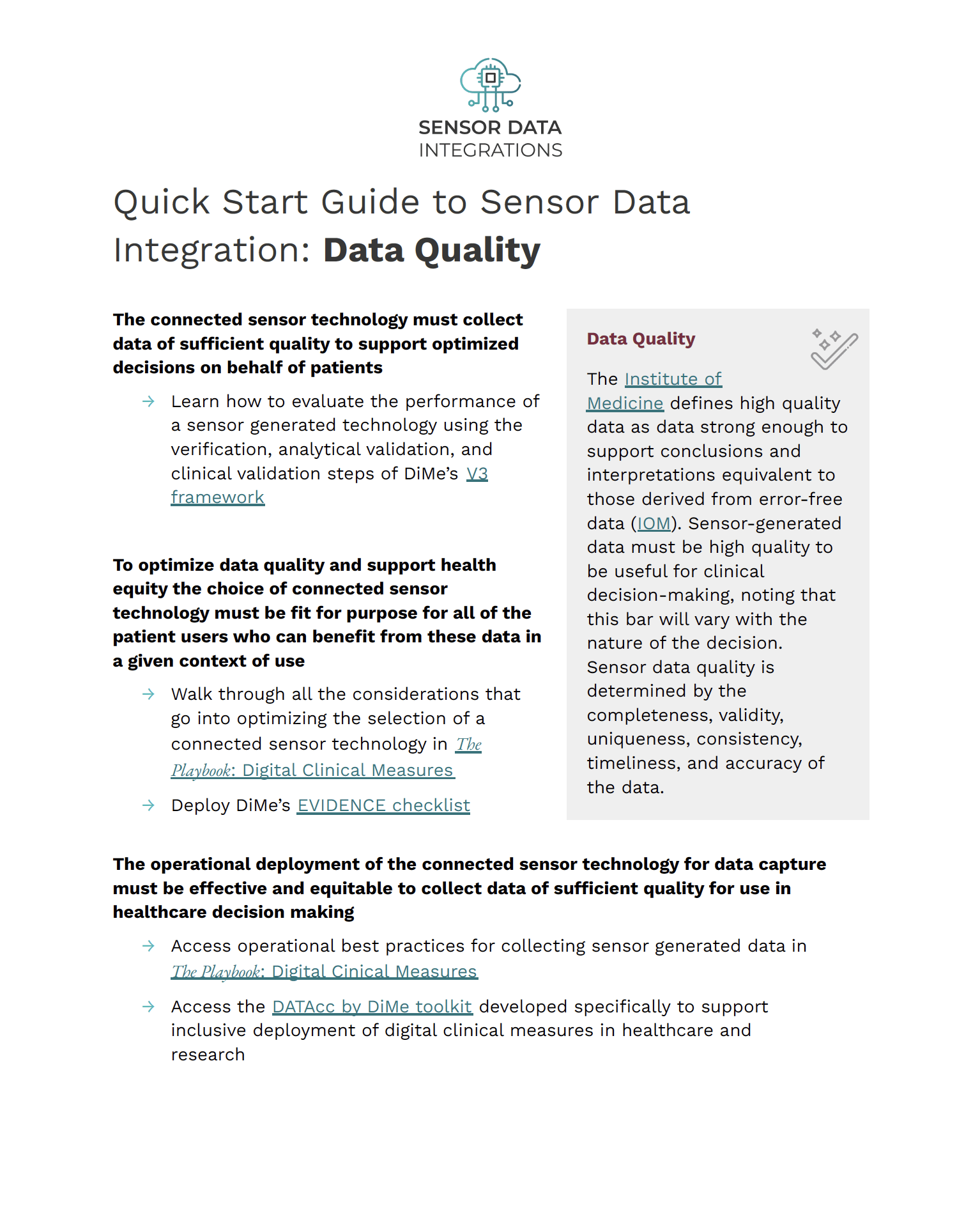

Sensor Data Integrations
Implementation Toolkit
Are you looking to begin or advance your sensor data integration journey? Six criteria are essential to your success: data collection, transmission, processing, security, privacy, and quality. Together, these key areas provide the building blocks for a successful sensor data integration strategy so you can make better decisions faster in health care and research.
The following considerations and best practices can help you balance these criteria, optimizing your performance and impact of your work with sensor-generated data on patients’ lives.
ART Criteria
Sensor-generated data is not clinically interpretable at the point of collection. For example, the electric currents on the skin captured by an ECG must be processed into heart rate before a person can understand the clinical relevance of the data. Substantial data processing is required to transform the signals captured by sensors and the high velocity flows of data they generate into information suitable for clinical decision-making.
The protection of personal, sensor-generated data from those who should not have access to it and the ability of individuals to determine who can access their personal information is not only required by laws and regulations in some instances, but also fundamental to establishing trust in a health data ecosystem that relies on sensor-generated data for clinical decision-making.
The practice of protecting sensor-generated data, and the systems that store and process these data, from unauthorized access, corruption, or theft throughout its entire lifecycle is an essential component of establishing sensor-generated data as a viable source of information to support clinical decision-making.
The Institute of Medicine defines high quality data as data strong enough to support conclusions and interpretations equivalent to those derived from error-free data (IOM). Sensor-generated data must be high quality to be useful for clinical decision-making, noting that this bar will vary with the nature of the decision. Sensor data quality is determined by the completeness, validity, uniqueness, consistency, timeliness, and accuracy of the data.
Considerations and Best Practices
‘ART’ Criteria Prioritization Tool
Each time you use sensor data to inform a clinical decision, the context is different. Use this tool to help optimize your approach to sensor data integrations to meet the needs of your systems and users.













